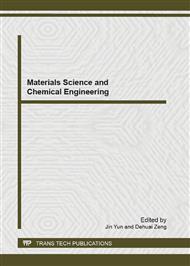p.698
p.703
p.708
p.712
p.718
p.724
p.730
p.735
p.742
Stilbene Molecular Probes as Potential Materials for Bioengineering: Real Time Analysis of Antioxidants and Nitric Oxide, Immunoassay in Solution and Biomembranes Fluidity
Abstract:
A series of fluorescent methods of analysis and investigation of system based on the use of stilbenes and potentially important in biochemistry, biophysics, biotechnology, and biomedicine were proposed and developed. In these methods, two new types of stilbene molecular probes have been used: (i) fluorescent photochrome molecules and (ii) super molecules containing fluorescent and fluorescent quenching segments. These methods utilize the following photochemical and photophysical phenomena: the fluorescence and phosphorescence quenching, photochrome photoisomerization, and triplet–triplet and singlet–singlet energy transfer. The fluorescence properties of the new probes were intensively exploited as the basis of several methodologies that include a real-time analysis of nitric oxide, immunoassay in solution, investigation of molecular dynamics of biomembranes in a wide range characteristic times, and characterization of sensors for antibodies. These techniques may be adapted to fibro-optic sensoring.
Info:
Periodical:
Pages:
718-723
Citation:
Online since:
May 2013
Authors:
Price:
Сopyright:
© 2013 Trans Tech Publications Ltd. All Rights Reserved
Share:
Citation:


